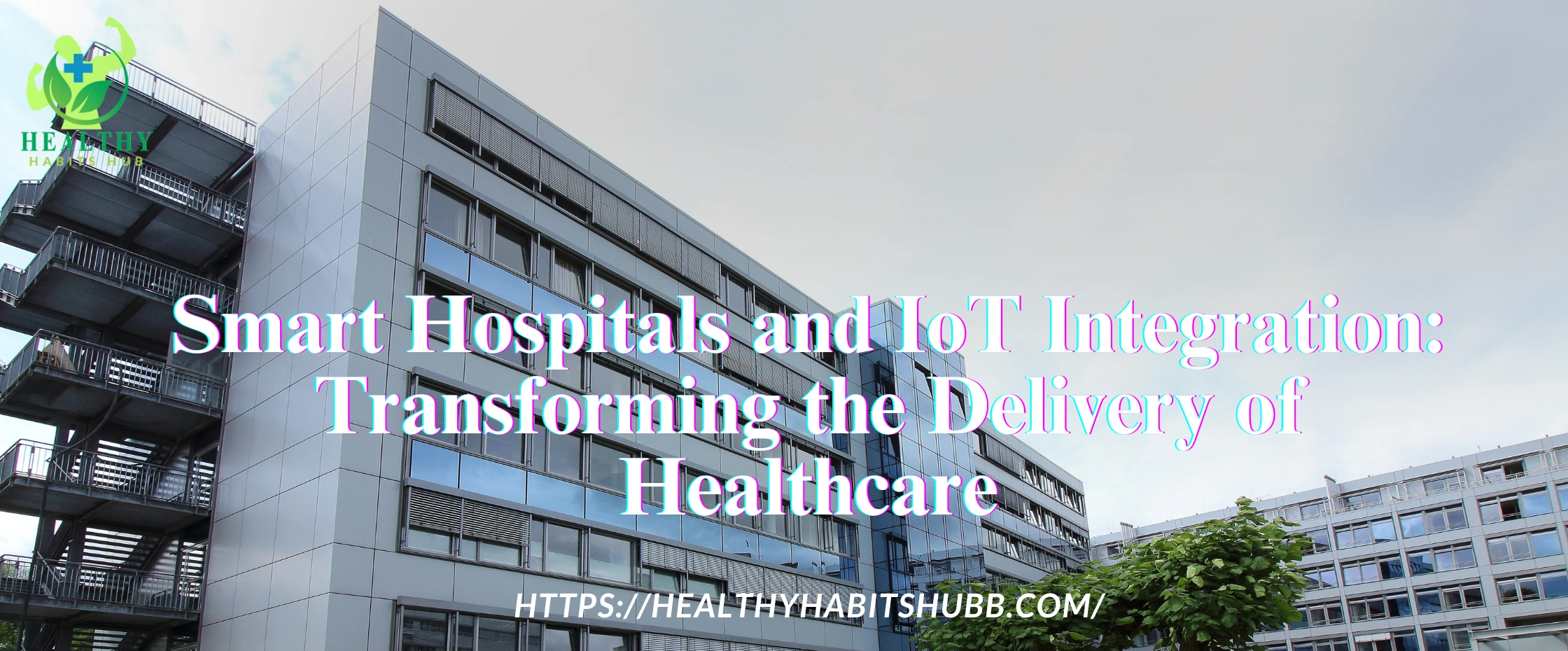Introduction
Table of Contents
ToggleThe innovations and technologies of the last few years have transformed the healthcare industry. Smart hospitals, together with the incorporation of the Internet of Things (IoT), have emerged as innovations that transform patient care, operations, and the entire delivery of healthcare. With IoT integration in infrastructure, healthcare systems are becoming connected, more efficient, and responsive. In this blog, we will discuss smart hospitals, the role of IoT in healthcare, and how this integration is changing the landscape of patient care.
What is a Smart Hospital?
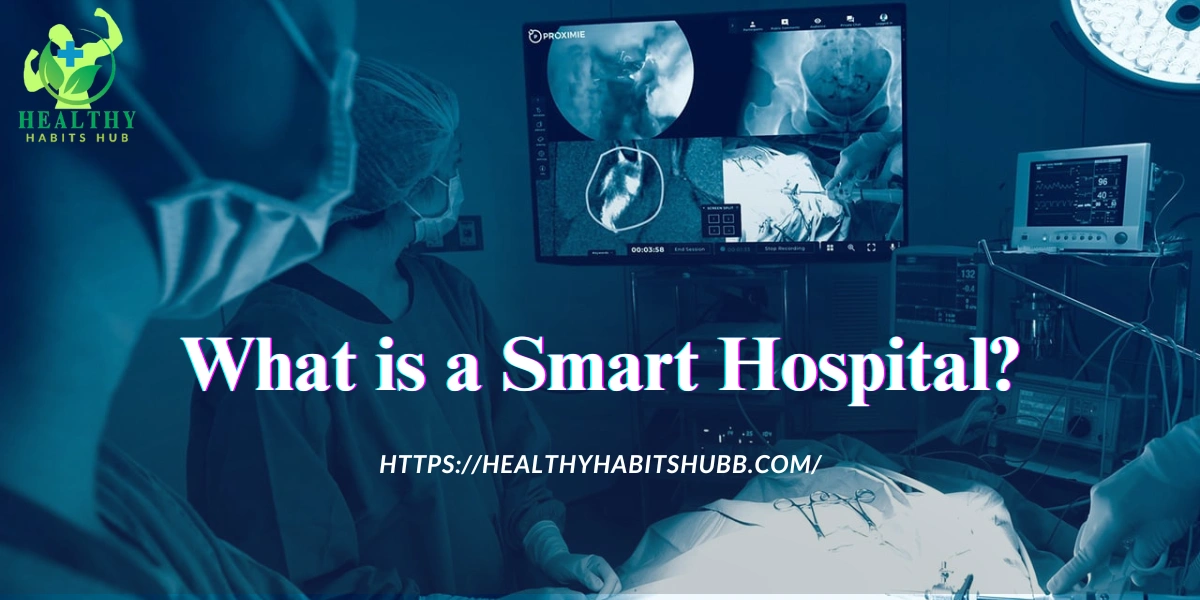
A smart hospital is a healthcare facility that uses new medical technologies, machine learning, big data, IoT, artificial intelligence, and other tools to improve patient healthcare results, manage hospital operations, and optimize the experience for users of the healthcare system. Such hospitals seek to improve their operational efficiency through automation and responsiveness to the needs of patients and medical practitioners.
Smart hospitals make use of various systems and devices that offer monitoring, predictive analytics, and automated responses in real-time to a multitude of scenarios in the realm of healthcare. In addition, these hospitals are evolving to be more patient-centric, ensuring that patients are offered the most effective and personalized care possible. Smart hospitals seek to optimize operational efficiency with the use of integrated IoT technology, aiming to improve safety, reduce costs, and ultimately enhance health outcomes.
What is the Internet of Things (IoT)?
The Internet of Things (IoT) is defined as a network of devices like appliances, vehicles, and other objects that can exchange data over the internet. These devices are embedded with sensors, software, and other technologies. In healthcare, IoT devices support the collection and sharing of information that can be analyzed instantaneously during the decision-making processes involved, thus improving patient care and overall hospital operations.
Medical IoT devices include everything from wearables that monitor a patient’s vitals to smart equipment in hospital rooms that manage medication administration and equipment usage. By fully incorporating these devices into hospital systems, healthcare providers are enabled to adopt a more agile and data-driven approach to patient care, resulting in heightened efficiency.
How Integrating IoT is Changing Smart Hospitals
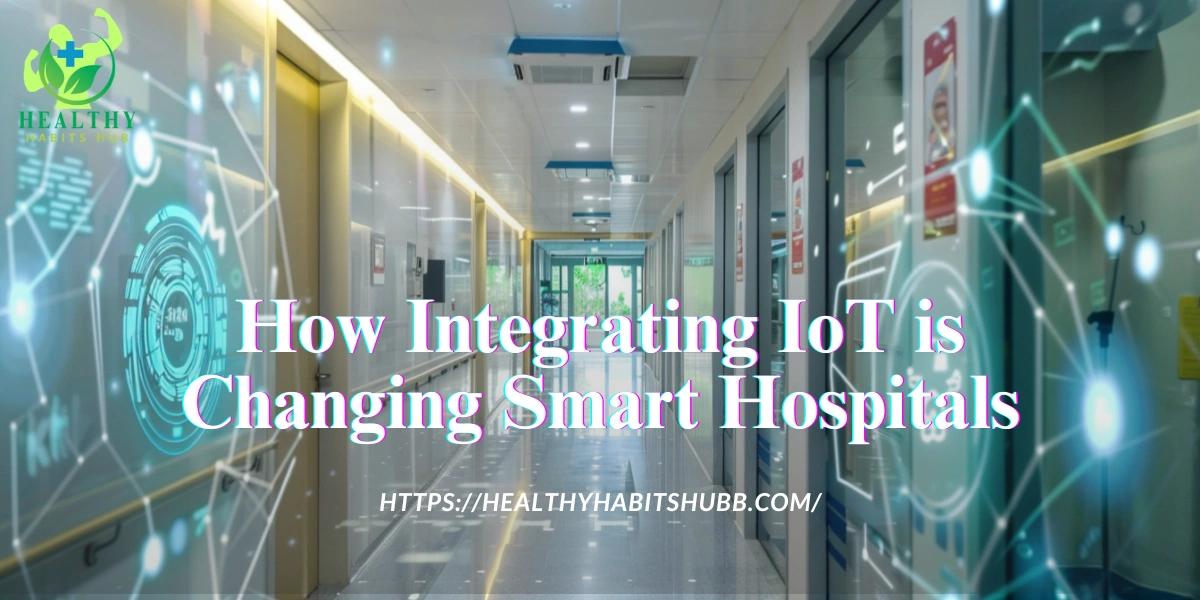
The incorporation of IoT capabilities into smart hospitals enhances patient care and improves hospital operations. Listed below are some significant ways by which IoT integration is transforming the healthcare sector:
- Collection of Patient Data and Ongoing Monitoring
Healthcare practitioners can now monitor patients’ health both in the hospital and remotely using IoT devices like wearable sensors, smart beds, and other sensor devices. These devices can be used not only to remotely monitor vital signs such as heart rate, blood pressure, oxygen saturation, and temperature, but also to indicate possible health deterioration and complications.
As an illustration, smart beds can track movement and even exertion onto the mattress which can assist in reducing the risk of pressure ulcers (bedsores). Diabetic patients can benefit from smart wearables such as smartwatches and patches that provide continuous monitoring of blood glucose and other cardiovascular parameters.
Making informed decisions based on real-time monitoring of data improves healthcare outcomes and minimizes the need for emergency interventions.
- Streamlined Hospital Operations
In smart hospitals, the Internet of Things (IoT) devices are integrated into the processes of the hospital beyond just tracking patient activities. In Smart Hospitals, IoT devices can be utilized for the management of equipment, supply chains, and improving the overall workflows within the hospital. For instance, RFID (Radio Frequency Identification) tags can be affixed to medical equipment and supplies, which allows staff to track the items and locate them with ease.
Present day devices that are equipped with IoT technologies can assist in asset management by capturing data about the device in real time. A good example of this is with a medical device. If the device is failing or approaching its end-of-life, an alert can be generated to hospital staff. This provides the possibility for the staff to replace or service the equipment before there is an operational issue.
In addition, IoT systems can automate a variety of administrative processes such as patient check-ins, scheduling of appointments, and management of inventories. With such automation, there is a reduction in human error which improves accuracy across the various departments within the hospital.
- Smart Devices and Patient Safety
IoT technology fosters innovation of smart devices that improve safety in health facilities by ensuring that the right medication is given at the right time, in the right dosage, and to the right patient. Smart dispensers, for instance, can track dosages and prompt healthcare personnel to administer medications at correct intervals.
IoT-enabled RFID tags can also be employed with patient wristbands and medication bottles to confirm the correct medications are being administered and to mitigate the medication error rate, which remains one of the most common causes of adverse events in hospitals. Through IoT, alerts can also be programmed for real-time notifications of harmful conditions such as high tachycardia, hypoxia, hypotension, or any other vital sign changes. Timely alerts allow for sufficient proactive measures to be taken by healthcare professionals to ensure that the patients’ complications do not escalate.
- Predictive Analytics and Preventive Care
An undeniable advantage of IoT in the healthcare sector is the ability to collect copious amounts of data, which can be analyzed for predictive insights. With the incorporation of machine learning and AI, healthcare providers are able to access data and anticipate potential health issues before they manifest.
For instance, IoT predictive analytics can identify patients who are at risk of falling, experiencing a cardiac arrest, or other complications. AI-enabled algorithms have the ability to analyze patient data, including but not limited to, activity levels, vital signs, and prior medical history to forewarn healthcare professionals of the possibility of a patient’s health deterioration.
Such capabilities enable preventive care, sparing physicians the need to deal with chronic illness fallout by intervening earlier to prevent disease or complication progression, ultimately reducing hospital readmissions while improving long-term health trajectory results.
- Enhanced Communication and Teamwork
The use of IoT in smart hospitals improves healthcare team communication and collaboration. Sharing real-time data grants physicians, nurses, and other medical personnel access to up-to-date patient information from any location within the hospital.
Healthcare providers are able to communicate through IoT mobile applications, smart hospital devices, and other telehealth technologies. These tools can enhance the efficiency of care coordination by ensuring all team members are informed about the patient’s care plan.
Moreover, IoT devices enabling telemedicine and remote consultations have simplified collaborative patient care by allowing multiple specialists to provide advice, eliminating the need for patients to be transported for inter-facility transfers or wait for scheduled appointments.
Notable Technologies Supporting the Integration of IoT in Smart Hospitals
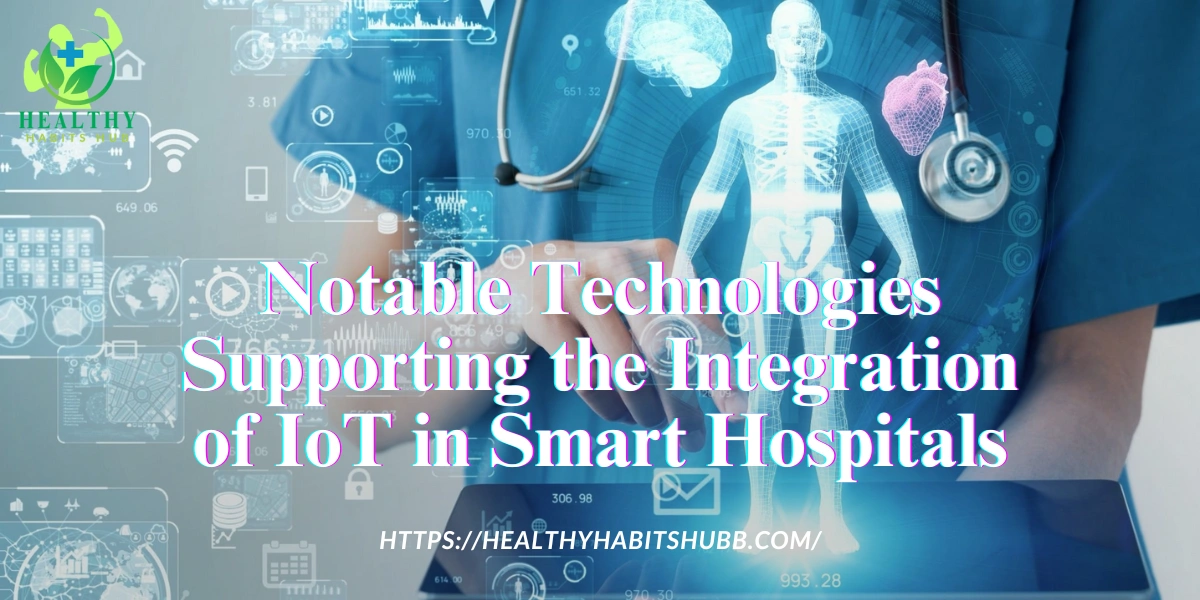
The following technologies are supporting the adoption of IoT in smart hospitals:
- 5G Connectivity
The implementation of IoT in healthcare is one of the many advancements expected from 5G networks. With 5G, the speed of data transfer is high and latency is low, which facilitates the transfer of data from devices to the hospital’s systems. Patients also can be monitored round the clock as 5G enables real-time data transmission. Healthcare systems that utilize smart hospitals rely heavily on 5G for remote monitoring, real-time data analysis, and predictive analytics.
- Wearable Devices and Sensors
Smartwatches, fitness trackers, and sensor-laden patches have found a new application in healthcare, enabling continuous monitoring of the patient’s health. These wearable devices are capable of monitoring important parameters and alerting healthcare professionals and patients about potential health issues. Moreover, smart sensors installed in hospitals, including smart beds and thermometers, are essential for the realization of a connected healthcare ecosystem.
- Cloud Computing
The use of cloud computing is vital in the storage and management of data from IoT devices. The cloud-based systems enable quicker and more thorough data retrieval and sharing than older systems. For instance, hospitals can now access, analyze, and share patient information across departments and even with other healthcare facilities. This breaks down collaboration barriers and ensures that healthcare providers are using the most up-to-date information during decision-making.
- AI and Machine Learning
AI and Machine Learning are tools that provide insight and predictive analysis from the vast amount of data created by IoT devices. For example, AI algorithms are capable of analyzing a patient’s health data over time and detecting patterns that would indicate potential health risks, thus alerting healthcare providers to take necessary preventive measures before the issues escalate.
Looking Ahead: Integrating IoT into Smart Hospitals

There is no doubt that the advancement of IoT technologies will transform the healthcare sector. We look forward to witnessing intelligent devices, sophisticated analytics, and better integrated systems as smart hospitals evolve.
Key future advancements include:
Personalized Healthcare:
Integration of IoT will continue to move toward more personalized healthcare, where treatments are based on an individual patient’s health data. Through IoT integration, genomics, and AI, hospitals can offer tailored treatment and preventive care.
How Does Personalized Healthcare Work?
Personalized healthcare works by gathering a vast array of data about an individual and using it to make more informed healthcare decisions. The following are some of the primary methods used in personalized healthcare:
- Genetic Testing
Genetic testing plays a crucial role in personalized healthcare. By analyzing a person’s genetic makeup, doctors can identify genetic variants that may predispose them to certain diseases or affect how they respond to medications.
For example, some genetic mutations may make an individual more susceptible to diseases like cancer, heart disease, or diabetes. By identifying these risks early, doctors can implement preventive strategies, such as lifestyle changes or early screenings, to reduce the likelihood of disease development.
Additionally, genetic testing can provide insights into how an individual may respond to certain medications. For example, some people may metabolize certain drugs more quickly or slowly due to their genetic makeup. By tailoring drug prescriptions based on genetic information, doctors can minimize the risk of adverse drug reactions and ensure that patients receive the most effective treatment.
- Biomarker Analysis
Biomarkers are biological indicators that can be measured to assess an individual’s health status. In personalized healthcare, biomarkers can provide valuable information about the presence of a disease, how far it has progressed, and how the body is responding to treatment.
For example, in cancer treatment, biomarkers found in blood or tissue samples can help doctors determine the specific type of cancer, predict how it will behave, and choose the most appropriate therapy. Personalized cancer treatments, such as targeted therapies and immunotherapy, are based on the presence of specific biomarkers.
- Lifestyle and Environmental Factors
In addition to genetic information, personalized healthcare takes into account lifestyle factors such as diet, physical activity, and stress levels, as well as environmental factors like pollution and access to clean water. These factors can have a significant impact on health outcomes and can be used to create a personalized care plan that addresses an individual’s unique needs.
For example, personalized nutrition plans based on a person’s genetic predispositions, lifestyle, and health conditions can help manage chronic diseases like obesity, diabetes, and hypertension. Similarly, tailored exercise regimens can be developed to improve cardiovascular health and reduce the risk of chronic diseases.
- Data Integration and Artificial Intelligence (AI)
Personalized healthcare involves the integration of vast amounts of data from various sources, including genetic testing, biomarker analysis, medical history, and lifestyle data. This data can be analyzed using artificial intelligence (AI) and machine learning algorithms, which can uncover patterns and make predictions about a person’s health.
For instance, AI-powered tools can analyze a person’s medical records and genetic data to predict the risk of developing certain diseases or respond to specific treatments. AI can also help doctors make more accurate diagnoses by analyzing medical images, lab results, and other data in real time.
Increased Automation:
As AI and IoT technologies continue to advance, hospitals will see greater automation, including robotic surgeries and automated medication delivery systems. This will minimize human error, improve efficiency, and enhance patient care.
Why Is Increased Automation Important in Healthcare?
The healthcare industry is complex, involving a wide range of tasks, including patient management, diagnosis, treatment, record-keeping, and administrative duties. Automation helps to streamline these processes, reducing the workload on healthcare professionals and allowing them to focus on patient care. Some key reasons why automation is so critical in healthcare include:
- Reducing Human Error: Healthcare is a field where accuracy is paramount. Automation helps reduce human errors, such as misreading patient charts or incorrectly administering medication. By automating repetitive and error-prone tasks, healthcare providers can ensure that patients receive the right care at the right time.
- Improving Efficiency: Healthcare systems are often overwhelmed by the volume of tasks, such as data entry, patient scheduling, and medication management. Automation streamlines these administrative and operational tasks, leading to faster and more efficient healthcare delivery.
- Enhancing Patient Care: With automation taking over routine tasks, healthcare providers have more time to focus on delivering high-quality patient care. Automation also enables real-time monitoring of patient vitals, improving patient safety and outcomes.
- Cost Reduction: By automating various processes, healthcare organizations can reduce operational Automation can help minimize waste, optimize resource allocation, and improve workflow efficiency, ultimately lowering the cost of healthcare services.
- Scaling Healthcare Services: As the demand for healthcare services continues to rise, automation can help scale services without the need for significant increases in the workforce. This is particularly important in regions with limited access to healthcare professionals.
Global Health Monitoring:
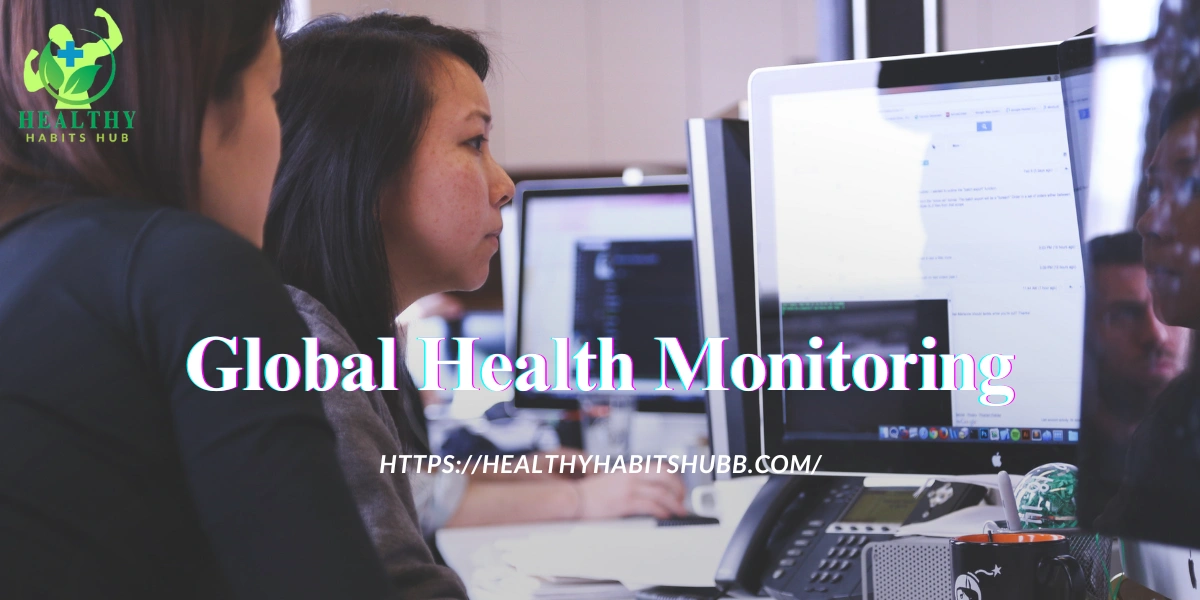 IoT will significantly impact global health monitoring, where devices interconnected across the globe can track health trends, monitor pandemics, and help in cross-border healthcare delivery.
IoT will significantly impact global health monitoring, where devices interconnected across the globe can track health trends, monitor pandemics, and help in cross-border healthcare delivery.
Why Global Health Monitoring Matters
Global health monitoring plays a critical role in tackling the complex health issues that affect populations worldwide. Some of the key reasons why global health monitoring is so vital include:
- Tracking Disease Outbreaks: By monitoring the spread of diseases like influenza, malaria, tuberculosis, and emerging pandemics such as COVID-19, global health authorities can provide early warnings and take timely action to contain the outbreaks.
- Identifying Health Inequities: Monitoring global health trends helps identify disparities in healthcare access and outcomes. It can reveal gaps in health services, such as in rural or underserved populations, and guide resources and interventions to areas of greatest need.
- Improving Health Interventions: By analyzing data on the effectiveness of health programs and interventions, global health monitoring allows governments and organizations to improve existing health strategies and develop new solutions.
- Managing Global Health Threats: Monitoring environmental factors, such as air pollution, water quality, and climate change, allows researchers and policymakers to understand their impact on public health. This helps mitigate risks related to non-communicable diseases like respiratory illnesses and cardiovascular conditions.
- Sustainable Health Development: Global health monitoring is essential for tracking progress toward international health goals, such as those outlined in the United Nations Sustainable Development Goals (SDGs), particularly Goal 3, which aims to “ensure healthy lives and promote well-being for all at all ages.”
Conclusion

The use of smart hospitals and the adoption of IoT are reshaping the healthcare industry by improving the delivery of care, optimizing hospital workflows, and shaping the future of healthcare. Technologies driven by the IoT enable constant monitoring, predictive analytics, real-time communication, enhanced IoT enabled decision-making, and planning, which improves the entire healthcare experience.
Advancements in these technologies will enable smart hospitals to become more efficient, driven by data, and focused on the needs of patients. The adoption of IoT will enhance the quality of care provided, while simultaneously lowering costs and increasing the accessibility of healthcare services on a global scale.
Related Article:
Smart Hospitals and IoT Integration: The Future of Healthcare

